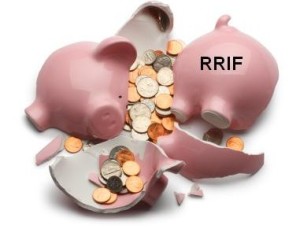
By Bob Lai, Tawcan
Special to Financial Independence Hub
Earlier this year, I discussed three key reasons why we don’t invest in GICs and have no plan to invest in them any time soon. After reading that article, a few readers asked about Canadian high-yield high interest savings account (HISA) ETFs or cash-alternative ETFs.
I get it, putting your hard-earned cash in the stock market can be considered risky for those risk-averse Canadians. More importantly, what should you do with short- or medium-term savings to allow such money to work extra hard for you?
Due to the shorter timeline, investing money that you need in the short or medium term in the stock market simply doesn’t make sense, because you might get caught by market volatility and a downturn and be forced to sell when you’re in the red.
Given that GICs force you to lock your money in for a set period and therefore are restrictive, these high-yield HISA ETFs can be quite enticing for some Canadians
Here are the best high-yield Canadian HISA ETFs available today.
Why you should keep some cash reserve
I believe it’s important to keep some cash reserves. How much cash reserves you set aside will depend on many different factors:
- Are you working or are you retired?
- If you’re working, do you have a relatively high savings rate to give you extra cash flow every two weeks?
- Do you have any debt?
- Do you have any big expenses planned for the next year?
- How much money do you need in your banking account to make you sleep well at night?
- Let’s also not forget that most banks have a minimum requirement for chequing & savings accounts or you’d have to pay a monthly fee.
This is why personal finance is personal. I can’t tell you how much is the right amount to set aside for your cash reserve or how much money you should have in your emergency fund. It will be different for everyone.
The key reason for keeping some cash reserves is to have liquidity. I can’t emphasize enough that you don’t want to be forced to sell your investments when the market is down simply because you need the money.
Imagine that you needed $7,000 to repair a leak in your house’s roof in March 2020 and you didn’t have any cash reserve. The market was in turmoil at that time and it would be terrible to have had to sell investments to fund this repair.
A couple of important notes on HISA ETFs
Before we dive into the best high-yield Canadian HISA ETFs, there are a couple of important notes I want to point out.
CDIC Protection
The Canadian Deposit Insurance Corporation (CDIC) insures savings of up to $100,000. Most Canadian financial institutions are members of the CDIC. This means when you have money deposited in a bank, you are protected up to $100,000. Provincial credit unions, such as Coast Capital Savings, are protected by the province’s deposit insurer with no limits.
Furthermore, all of these high-yield HISA ETFs I am going over in this article are provided by reputable ETF companies, so there shouldn’t be any concerns for these ETF companies to go bankrupt.
OSFI Rules
In October 2023, the Office of the Superintendent of Financial Institutions (OSFI), which regulates banks, announced new guidelines regarding HISA ETFs.
The OSFI essentially requires HISA ETFs to support 100% liquidity so withdrawals by other financial institutions can be supported on demand. Before this requirement, banks typically maintained a 40% runoff rate on HISA assets.
So what does the OSFI ruling mean?
Basically, the new rule means that the yield from these HISA ETFs isn’t as high as previously.
OSFI can impose further rules, reducing the yields further. This is something investors should keep in mind when investing in a HISA ETF.
Best high-yield Canadian HISA ETFs
Here are the best high-yield Canadian HISA ETFs you can easily buy and sell with your discount broker: Continue Reading…






